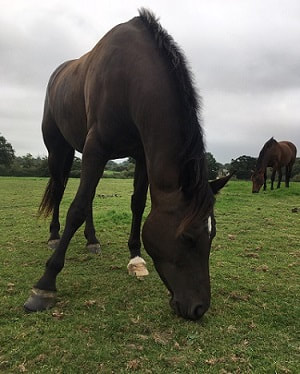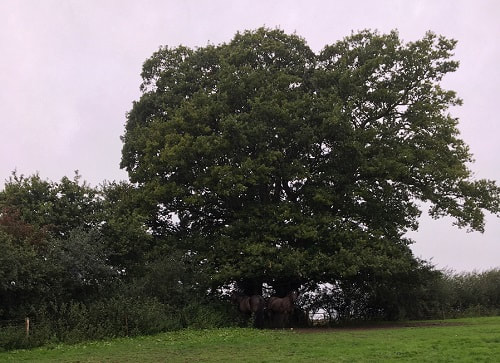 Horses are continuous grazers, which can lead to horse pasture often being overgrazed. Horses are continuous grazers, which can lead to horse pasture often being overgrazed. Natural Flood Management (NFM) works with nature to help hold back water and slow the flow of river catchments throughout the UK. This can help to reduce downstream flooding, increase biodiversity and prevent drought at a relatively low cost. This approach is rising in popularity among NGO’s, governmental organisations and landowners throughout the UK as a method in dealing with localised flooding, whilst improving wildlife habitats and providing multiple other benefits to society. The majority of NFM work is focused on building partnerships where rural landowners help to mitigate against flood run off from rural and urban areas, including their own land. There are many different land uses that can contribute to localised flooding, but some, such as horse grazing are rarely considered in terms of what they can contribute to reducing flooding. With an estimated 944 000 horses kept in the UK (BETA, 2018), the British countryside is dotted with equestrian facilities both large and small. Horses are continuous grazers and need a constant supply of forage throughout the year. This can lead to horse pasture often being overgrazed and threadbare and can ultimately lead to muddy gates, soil erosion and nutrient run off via drains and surface run off channelling towards the nearest river tributary. Good pasture management can help horses stay fit and healthy and can reduce their parasite burdens, and usually means rotating paddocks to limit the use of flood prone fields during times of heavy rain. Systems such as the Equicentral System encourage horse owners to become “grass farmers” promoting a more biodiverse grass and herb mix which has multiple benefits for horses and wildlife. Horses benefit from a more nutritious diet whilst higher level vegetation and wildflowers will encourage a greater number of invertebrates, which in turn attracts birds and bats that also help keep down numbers of problem horse flies. In addition, deeper plant roots absorb more water and nutrients into the soil which helps to prevent run off and erosion. Planting trees and hedgerows on equestrian land can also create multiple benefits for the horse by helping to absorb water to prevent muddy paddocks, creating shade and supplying natural forage and nutrients missing from their regular diet. When available horses will actively nibble on bark, berries and leaves from hedgerows, reflecting their role as both browsers and grazers in a natural ecosystem. Our Natural Flood Management project, Sussex Flow Initiative (SFI), carries out a huge range of Natural Flood Management work across Sussex each year. Recently, we facilitated the planting of hedgerows, shaws and woodland comprising over 12,050 trees across a 39 hectare site at the Sussex Horse Rescue Trust (SHRT) near Uckfield with a further 8,000 additional trees planned. This project was designed to create shade and shelter for the rescued horses, as well providing extra forage and enhancing local pollinator and ecological networks. SFI have also worked with other landowners to create woody debris features in water channels which help slow the flow upstream to reduce areas prone to flooding. Managing your land to help prevent downstream flooding, can ultimately also help enhance your paddocks for equestrian use. For more information and free advice on how to make your horse pasture more water friendly please do not hesitate to contact us. References British Equestrian Trade Association (BETA) (2018) Market information, National Equestrian Survey 2015 [Online]. Available at www.beta-uk.org/pages/industry-information/market-information.php (Accessed 13 December 2018). .
0 Comments
|

 RSS Feed
RSS Feed
